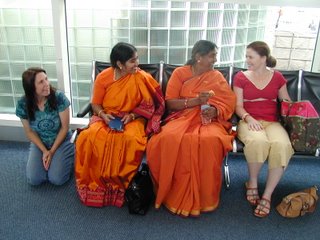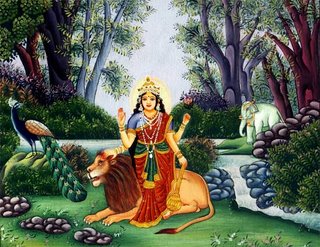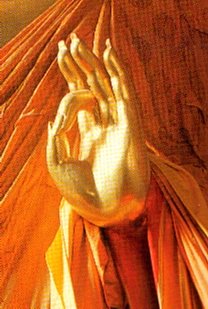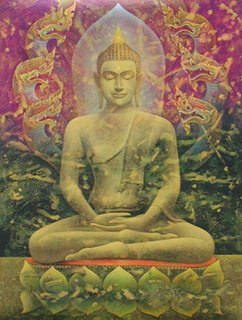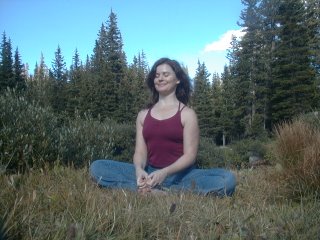1st Annual Devi Festival in Boulder/Denver!
It's been forever since I've posted anything new to my blog -- though I had the good intention of writing something at least once a week! Well, we all know where good intentions lead...
Last week we had the good fortune of hosting the first annual Devi Festival in Boulder and Denver with the help of some wonderful local Yoga center directors -- Hansa Knox of Prana Yoga and Anna Freedom of Samadhi Yoga, both in Denver. Sri Karunamaya Baba and his lovely wife, Usha Amma, (the leaders of Devi Puram in India) blessed us with abundant knowledge, pujas, food, and love during the time they were here.
And we were doubly blessed to experience the presence of Swami Amitananda, a very sweet and holy saint who was Ammachi's first devotee and is responsible for bringing her to the world. Every night he sang bhajans with such devotion that I thought we might blast off into another realm entirely -- especially when he sang, "Maaaaaa!"
Jeff and I were also fortunate to host some very special and sacred fire ceremonies at our house and even got re-married in the Vedic way! I received the sacred thread, the mangala sutra, that now permits me to study the Vedas...Of course I've been studying the Vedas for 20 years now, but at least it's official.
I've posted some photos of the highlights of our little festival. I'm hoping we can continue the trend next year and many more years to come -- and make a home for the Divine Mother here in the American Himalyas.

(Amma Applying Kum Kum Powder as a Blessing)

(Offering Puja to Shri Ganesha, to Remove All Obstacles)

(Invoking the Remover of Obstacles in the Fire with the Help of Sri Karunamaya Baba)

(Offering the Fullness of Life to the Fire)

(Making Offerings to the Goddess Gauri for Love and Abundance in Married Life)

(Sri Karunamaya Baba, Pontiff of Devi Puram -- A Sacred Center for Goddess Worship in India)

(Jeff Tying the Sacred Thread -- Mangala Sutra)

(Offering Sacred Betel Leaves On Each Others Head)

(Throwing Rice!)

(The Happy Married Couple)

(Taking the 7 Sacred Steps. My Favorite One -- Supporting Each Other's Awakening)

(Receiving the Blessings of Swami Amitananda)

(Swami Amitananda Offering Kirtan at Prana Yoga in Denver)

(Special Out of Town Devotee of Divine Mother from Minneapolis -- John Baby!)

(Puja to Divine Mother at Samadhi Center for Yoga in Denver)

(A Group of Devotees After the Puja at Samadhi Yoga in Denver)

(Another Photo From the Samadhi Yoga Puja -- The Tallest Lady is Anna, the Director!)

(The Three Devis After the Puja at Samadhi)

(Double Rainbow in the Sky after the Puja at Samadhi)

(Baba and Amma in the American Himalayas!)

(Baba and Amma by the Yoni Rock, a Natural Symbol of Divine Mother)

(John Baby with his Adopted Parents -- Baba and Amma!)

(Shyama Homa at our Home)

(Vidyavani Helping Baba Keep Count of the Mantras)

(Joining Together for Final Blessings at the Shyama Homa)

(Offering Our Fullness to the Fire)

(The Divine Mother Giving Blessings in the Form of Fire)
